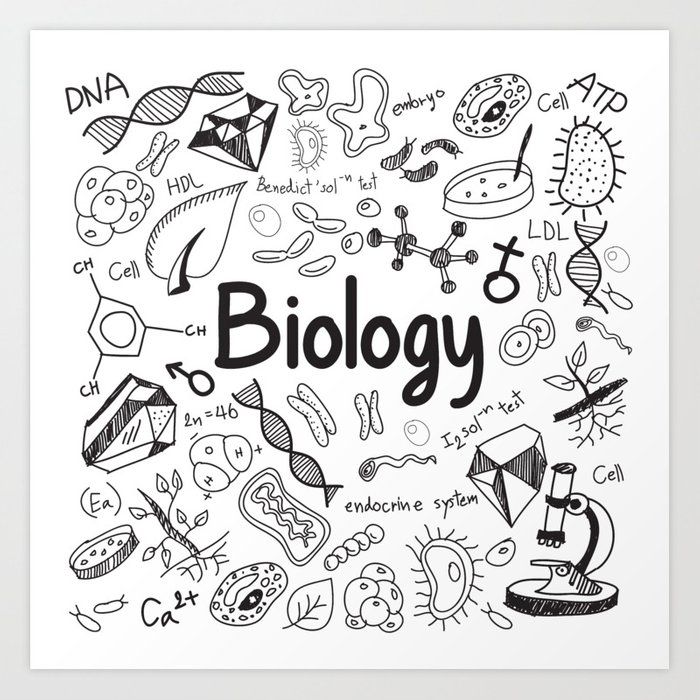Focusing Class 11th
Specially designed study material for Class 11 as per CBSE guidelines
Unlimited DOUBT Solving Classes for FREE!
Complete Conceptual Understanding
Advanced study material for competitive exams(IIT-JEE/NEET)
Test Series for Practice

Biology is the study of all the concepts of natural science of life and living organisms. It comprises of living organisms' physical structure, important molecular interactions, chemical processes, physiological mechanisms, development and evolution. Biology also tells us how cells and organisms work. Biology is the scientific study of life. It is a natural science with a broad scope but has several unifying themes that tie it together as a single, coherent field. For instance, all organisms are made up of cells that process hereditary information encoded in genes, which can be transmitted to future generations.
Biodiversity; Need for classification; three domains of life; concept of species and taxonomical hierarchy; binomial nomenclature.
Five kingdom classification; Salient features and classification of Monera, Protista and Fungi into major groups; Lichens, Viruses and Viroids.
Classification of plants into major groups; Salient features and classification of plants into major groups - Algae, Bryophyta, Pteridophyta, Gymnospermae and Angiosperms.
Salient features and classification of animals, non-chordates up to phyla level and chordates up to class level (salient features and distinguishing features of a few examples of each category). (No live animals or specimen should be displayed.)
Morphology of inflorescence and flower, Description of 01 family: Solanaceae
Anatomy and functions of tissue systems in dicots and monocots.
Morphology, Anatomy and functions of different systems (digestive, circulatory, respiratory, nervous and reproductive) of frog.
Cell theory and cell as the basic unit of life, structure of prokaryotic and eukaryotic cells; Plant cell and animal cell; cell envelope; cell membrane, cell wall; cell organelles - structure and function; endomembrane system, endoplasmic reticulum, golgi bodies, lysosomes, vacuoles, mitochondria, ribosomes, plastids, microbodies; cytoskeleton, cilia, flagella, centrioles (ultrastructure and function); nucleus.
Chemical constituents of living cells: biomolecules, structure and function of proteins, carbohydrates, lipids, nucleic acids; Enzymes- types, properties, enzyme action.. (Topics excluded: Nature of Bond Linking Monomers in a Polymer, Dynamic State of Body Constituents Concept of Metabolism, Metabolic Basis of Living, The Living State)
Cell cycle, mitosis, meiosis and their significance.
Photosynthesis as a means of autotrophic nutrition; site of photosynthesis, pigments involved in photosynthesis (elementary idea); photochemical and biosynthetic phases of photosynthesis; cyclic and non-cyclic photophosphorylation; chemiosmotic hypothesis; photorespiration; C3 and C4 pathways; factors affecting photosynthesis.
Exchange of gases; cellular respiration - glycolysis, fermentation (anaerobic), TCA cycle and electron transport system (aerobic); energy relations - number of ATP molecules generated; amphibolic pathways; respiratory quotient.
Seed germination; phases of plant growth and plant growth rate; conditions of growth; differentiation, dedifferentiation and redifferentiation; sequence of developmental processes in a plant cell; plant growth regulators - auxin, gibberellin, cytokinin, ethylene, ABA.
Respiratory organs in animals (recall only); Respiratory system in humans; mechanism of breathing and its regulation in humans - exchange of gases, transport of gases and regulation of respiration, respiratory volume; disorders related to respiration - asthma, emphysema, occupational respiratory disorders.
Composition of blood, blood groups, coagulation of blood; composition of lymph and its function; human circulatory system - Structure of human heart and blood vessels; cardiac cycle, cardiac output, ECG; double circulation; regulation of cardiac activity; disorders of circulatory system - hypertension, coronary artery disease, angina pectoris, heart failure.
Modes of excretion - ammonotelism, ureotelism, uricotelism; human excretory system – structure and function; urine formation, osmoregulation; regulation of kidney function - renin - angiotensin, atrial natriuretic factor, ADH and diabetes insipidus; role of other organs in excretion; disorders - uremia, renal failure, renal calculi, nephritis; dialysis and artificial kidney, kidney transplant.
Types of movement - ciliary, flagellar, muscular; skeletal muscle, contractile proteins and muscle contraction; skeletal system and its functions; joints; disorders of muscular and skeletal systems - myasthenia gravis, tetany, muscular dystrophy, arthritis, osteoporosis, gout.
Neuron and nerves; Nervous system in humans - central nervous system; peripheral nervous system and visceral nervous system; generation and conduction of nerve impulse.
Endocrine glands and hormones; human endocrine system - hypothalamus, pituitary, pineal, thyroid, parathyroid, adrenal, pancreas, gonads; mechanism of hormone action (elementary idea); role of hormones as messengers and regulators, hypo - and hyperactivity and related disorders; dwarfism, acromegaly, cretinism, goiter, exophthalmic goiter, diabetes, Addison's disease.